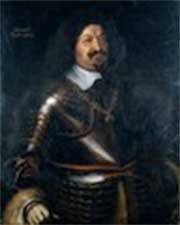I Never Knew What It Was Called
If I want to sound noble I could call myself Jose de Mier. That’s because in this instance I’m using the “de” which is officially called the nobiliary particle. I never knew this part of a name had a specific appellation, but it does. I knew that the de was some sort of way to identify names of noble families. In French or Spanish it means “of” and if it’s followed by a place name it’s usually referring to nobility, at least in that family’s past.

As I said in other pages on this Jwebsite, the name Mier originates in the Santander province of Spain in the village or town of Mier so those persons that have the de Mier surname are likely to come from noble lineage. It’s amazing what I find out as I do my research into Jose Mier. I’m taking down a lot of rabbit holes but it’s worth the trip because I am urge even more informed. For more information you can visit Wikipedia on the subject and I have an excerpt from their page on the nobiliary particle here:
In Spain, the nobiliary particle de is also used in two different styles. The first is a “patronymic-de-toponymic” formula,[9] as used by, among others, the fifteenth-century general Gonzalo Fernández de Córdoba, the fourteenth-century chronicler and poet Pero López de Ayala, the European discoverer of the eastern Pacific, Vasco Núñez de Balboa, and many other conquistadors.[10] The second style is use of the particle de before the entire surname. This style resembles but is more ambiguous than the French one, since there is no convention for a different spelling when the de is simply a prepositional particle in non-noble toponymic names such as De la Rúa (literally, “of the street”) or De la Torre (“of the tower”). Examples of nobility particle de without patronymic include the sixteenth-century first Marquis of Santa Cruz, Álvaro de Bazán, the conquistador Hernando de Soto, a common tradition in Spanish culture. Unlike French, Spanish lacks elision, and so no contraction is used when the surname starts with a vowel (though exceptionally we find Pedro Arias Dávila), but contraction is used when the surname includes the article “el” as in Baltasar del Alcázar.
A Spanish law on names, from 1958 and still in force, does not allow a person to add a de to their surname if it does not already have it. The law does allow for one exception. A de may be added in front of a surname that could be otherwise misunderstood as a forename.[11] Conclusive proof of the nobility of a surname can be determined by establishing whether that surname is associated with a blazon, since for centuries coats of arms have been borne legally only by persons of noble condition.[12]
Surnames composed of two names linked by a hyphen (“-“), implying that equal importance is given to both families, do not indicate nobility. For example, the hyphenated surname Suárez-Llanos does not indicate nobility.
